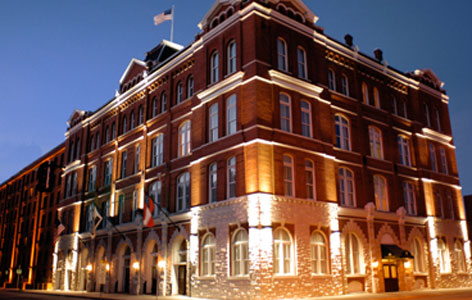Diva Says: Money Makes Your World Go ‘Round
“Money may kindle, but it cannot by itself, and for very long, burn.”
—Igor Stravinski
This is one of the hardest parts of the planning process for me. But if you’re a responsible money-saving, receipt-keeping kind of gal, you’ll breeze through this process. Because I need to balance my spontaneous globe-trotting self, with my limited resources, I created a money matrix. It is a simple form that guides me through the expenses I’ll encounter when I’m traveling. By the time I’ve filled in the blanks, I have a good idea of how much money I’ll need in order to have a safe and enjoyable trip. I’ll start with a general budget, say $2,500 for my whole trip, and my goal is not to spend more than that on my vacation.
Please recognize that the example below is based on my personal experience, so your numbers will be different. I don’t rein in spending when it comes to safety, and neither should you. From my traveling experience, a good, safe room for one person will run between $90 and $210 a night. Your room rate will vary greatly depending on the time of year and hotel availability.
So, let’s get started planning your trip. Here’s what I do:
1. I figure out how much money I can spend without cashing in my gold bullion or selling a kidney.
$2,500
2. I decide how long my fantastic voyage will last.
7 days – 6 nights
3. I assume I will spend $100 a day for dining, tips, snacks, shopping, transportation, entertainment, gifts, etc.
$700
4. Airline ticket. (I try to use my frequent flier miles to travel free.)
$550 round trip
So based on my calculations, this is what I have…
$700 for my per-day spending money
$550 for my airline ticket
$100 miscellaneous glad-I-have-it reserve
$1,350
$2,500
– $1,350
= $1,150
Divided by the nights I’ll be staying in a hotel room (six nights because I spend one night traveling):
$191 – 15% taxes = $162
Based on my very rough calculations, I can spend no more than $162 a night if I want to stay within my budget. (Taxes differ from country to country, but the average is 15%.)
You might be asking why I assume that I am going to spend $100 a day. The answer: Because I know I will. I’ll take cabs, dine, buy gifts, see shows, go to spas, and shop. You might be more—or less—conservative than I am, so calculate a lower—or higher—amount if you choose. Use this money matrix and fill in the budget that works for you on each of your solo trips. And then, the tough part for some of us—stick with it!
Planning on going international?
If you plan on staying in the United States, you can skip this next section about international currency exchange. But if you are going to another country, keep reading.
“An ounce of prevention is worth a pound of cure.”
—Henry de Bracton
Oh, the difference between pounds and dollars!
On my maiden voyage, the first stop was London. I knew they used pounds, but I didn’t pay attention to the exchange rate. I got there and exchanged a handful of my U.S. dollars into pounds—not noticing what I was given back. Later that day, I was delightfully surprised that a pub lunch was a mere three pounds and I could whet my underaged lips with beer for as little as two pounds. I was having a splendid time in jolly old England until halfway through my month-long trip, when I almost ran out of funds.
I did not carry a credit card back then. This was a quick yet painful lesson in international currency dynamics. At last I took the time to check at a bank, where I learned the exchange rate was almost two to one. That meant that ten U.S. dollars got me five pounds. When I planned my trip, I thought I would be spending about thirty dollars a day. Instead, I was spending thirty pounds a day!
By the time I got to France, I had no idea what my money was worth. I remember standing under the Eiffel Tower dumbfounded by my lack of currency exchange understanding. I was frustrated and worried that I didn’t have enough cash to get myself through the rest of the month. I made it, but just barely. I ate a lot of day-old bread and stayed in very uncomfortable hostels for the rest of the trip. On the glass-half-full side, I did lose twenty pounds that I needed to get rid of anyway. I thought of it as a true European weight loss plan! When I returned to California, I had less than five dollars in my pocket, in the form of three pounds and ten francs. That’s not a safe or smart way to travel.
Although most European hotels will give you their room rates in U.S. dollars, it’s still a good idea to translate your U.S. currency into the currency of your destination. How much will your hotel room cost in pounds, euros, rubles, yen, or pesos? How much does that translate to in American dollars? Check out http://www.xe.net/ucc/ for your currency exchange needs. It’s an easy-to-use website where you choose a dollar amount and the type of currency you want to exchange. It will do all the converting for you, giving you the amount your money is worth in the currency of your destination. Also remember that money is a dynamic, changing entity and that the rate you get one day will not necessarily be the rate you get the next.
Prep Tip
Take $100 cash to a currency exchange place before your trip to see and feel what your money translates into. This will give you an intimate look at currency exchange at work, plus you’ll have cab money when you arrive! Check the currency before you leave, just to make sure it’s the right type. My friend Patti knew to get money exchanged before takeoff, but ran into a small language barrier at the bank. It wasn’t until she was eight hours into a flight to Sydney that she realized she had received Austrian rather than Australian currency!
Many large city banks can exchange currency for you; so will American Express locations, as well as all international airports. Just as with buying food at airports, expect to pay a higher exchange rate when converting your money there.
Christina is from São Paulo, Brazil, and is studying at Stanford University for the next few months. When I asked her what she thought about using American dollars, she said, “I only use my credit cards; it is much easier for me. I just don’t know how much I am spending.” Christina has found that credit cards allow her freedom when she’s not exactly sure what the currency translation is. When using plastic fantastic, make sure to use a card that has a rewards program and a way to redeem your points for travel. Expect to be charged a 1-percent to 3-percent fee by your card service; you would be charged the same if you exchanged your money at a bank. Check with your bank to find out how much they will be charging you to use your card overseas.
Using your ATM card to withdraw money directly from your account is the most economical way of exchanging money. Many times you are not charged a service fee, but this is something you need to check with your bank. I highly discourage buying items with your ATM Visa debit card while traveling. I used mine only once. When I returned home from Egypt, I learned that a vendor charged me double for a $400 item! The dishonest merchant ran my debit card twice, and I was not aware of this mistake until I returned home and checked my bank statement. I had to work with my bank to get my money back, and it took awhile.
The best cards to use while traveling are the ones that give you reward miles. They should also fix any false purchase on your card without any fuss. American Express and Diners Club are two cards that understand the world traveler and are willing to fix any mistakes without too much hassle, but both have pricey annual service fees. I have found them both pretty reliable when I truly needed them. I had false charges on my Diners Club card from a trip to the Bahamas. My credit card bill showed a charge of $450 at a shop I didn’t recognize. When I notified Diners Club, they simply removed the charge and said they would do their own investigation. Many credit cards offer protection plans for your cards if they are stolen and used by others; frankly I believe that should be an automatic service provided to protect the cardholder, as well as the credit card company. Also, many cards come with an automatic traveler’s insurance policy for you when you pay for your trip with the card. This is helpful if you lose your luggage or get stuck in a bind. You might want to review which cards are offering this.
Traveler’s Checks and Carrying Cash
Years ago, traveler’s checks were the way to go. If you lost them, they could be replaced, and most venues across the world accepted them. Times have changed, and we have become a global electronic village. I find that using credit cards and carrying a small sum of local currency is the way to go. Using traveler’s checks is much like writing checks. You show your identification, note the check number you’re using, and sign the check in front of the seller. If you signed your traveler’s checks before trying to use them, many times they will not be accepted. These are factors to consider before you depart, because you buy traveler’s checks in the United States.
With respect to carrying cash, use your discretion. If you lost it, would it dampen your trip and strain your budget? If the answer is yes, maybe you should stick with a small sum of cash and a credit card or two. My friend Mindy and I were in Las Vegas for a work convention. We arrived at our hotel room after a late flight and rushed out the door to get to the Hard Rock Hotel for a party hosted by Vanity Fair. In my haste, I left my purse in our hotel room, but Mindy offered to lend me $100 until we got back. She withdrew $100 for me at an ATM and carried it in her purse. The party was a high-energy fashion feast where they gave us each $75 worth of chips. The night was a grand affair—true Vanity Fair style—and Mindy and I quickly gambled our $75 away. We shared a cab back to the hotel with another guest from the party. But then Mindy realized she had left her purse at the blackjack table. The gentleman we rode back with lent us $20 for the cab ride back to the Hard Rock. While Mindy searched for her purse in the hotel, I had to entertain the cab driver. I watched the meter slowly tick toward $20. He knew we only had $20, but he gave me a list of services I could perform to pay for the extra cab fare. I decided that walking back to the hotel in my Gucci stilettos was much less painful than my other options. I left the cab and found Mindy, who had recovered her purse. Fortunately, someone had turned it in with her cash (and mine) intact, and we were able to pay for a cab ride back to our hotel. In retrospect, I should have taken the time, before we left for the party, to get my own purse. I shouldn’t have made anyone else responsible for my cash.
Trip Tip
It has been suggested that I carry only one credit card with me when I travel, but I disagree. I usually take all my cards (American Express, Diners, Visa, and MasterCard) and leave two of them in the hotel room safe, carrying the other two with me. If something happens to my cards, I still have backups. Also, if the venue I’m at does not accept American Express, I can use my Visa card. This was the case when I went to Brazil for Carnival. Although I had brought my Visa and American Express cards, I’d left my Visa back at the hotel room, and none of the bikini shops I visited took American Express. I had to rush back to my room and get my Visa card so I could buy a few of those very tiny bikinis for the beaches of Copacabana and Ipanema before the shops shut down for Carnival.
Prep Tip
Whatever credit cards you decide to take and use on your trip, make sure you have a list of their international emergency numbers. Most cards have an international collect calling number on the back, but if you lose the card, you won’t have the number! So write the numbers down and include your credit card number. Keep this information in a safe place in your hotel room.
Now that you have a clearer understanding of the dynamics of international money movement, take the next few minutes to think about money.
Exploration Exercises
1. Decide how much money you can spend using the money matrix. Does this amount feel safe to you? Does it cause you any stress?
2. Honestly think about your spending habits. Do you plan on changing them once you’re out on your own? If so, how?
3. What does money represent to you? Fear? Freedom? Excitement? Worry?
(For international travelers) How do you think this will change once you have foreign money in your hands?
Discover more from Tango Diva
Subscribe to get the latest posts sent to your email.



